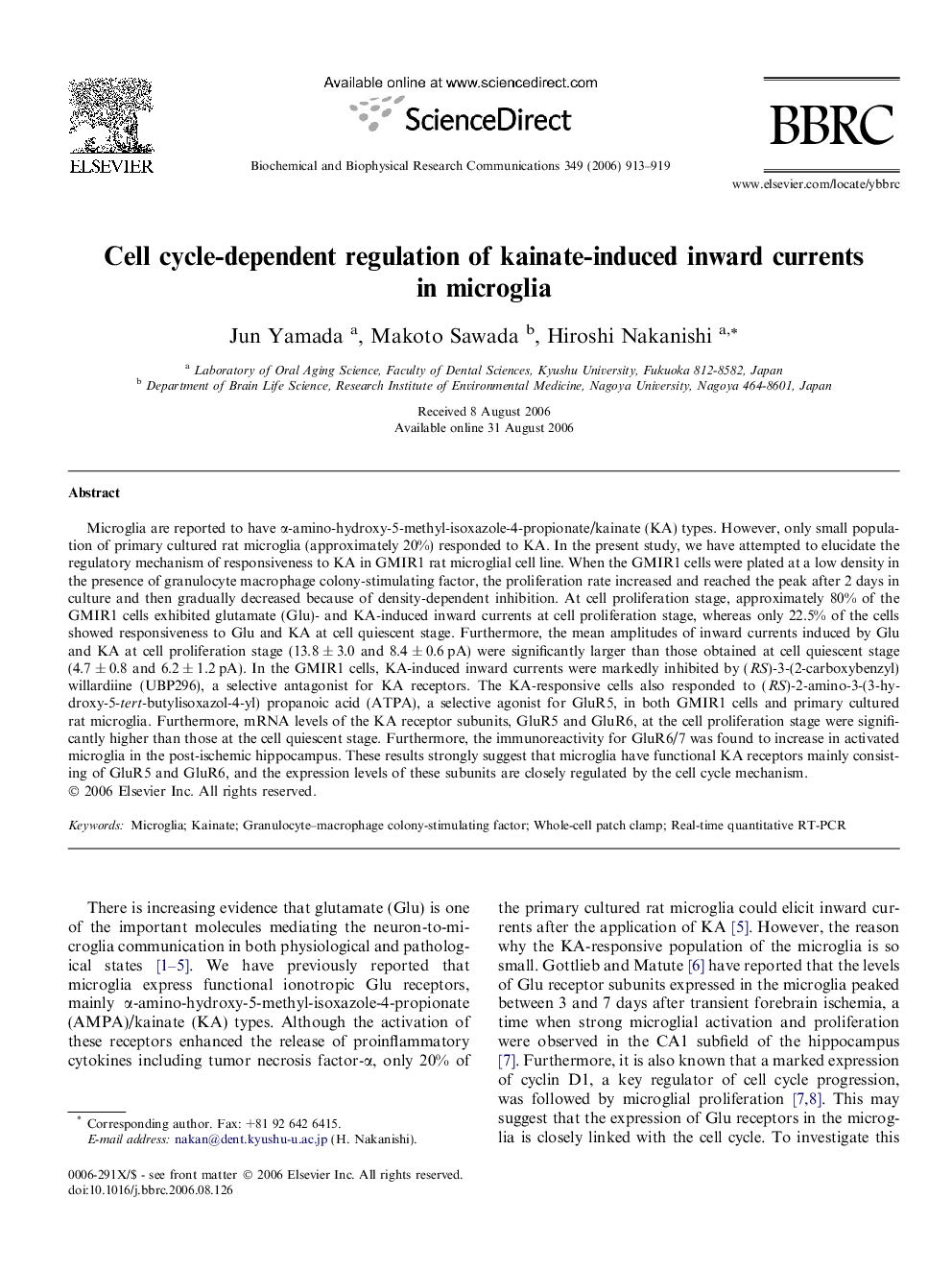| Article ID | Journal | Published Year | Pages | File Type |
|---|---|---|---|---|
| 1938830 | Biochemical and Biophysical Research Communications | 2006 | 7 Pages |
Microglia are reported to have α-amino-hydroxy-5-methyl-isoxazole-4-propionate/kainate (KA) types. However, only small population of primary cultured rat microglia (approximately 20%) responded to KA. In the present study, we have attempted to elucidate the regulatory mechanism of responsiveness to KA in GMIR1 rat microglial cell line. When the GMIR1 cells were plated at a low density in the presence of granulocyte macrophage colony-stimulating factor, the proliferation rate increased and reached the peak after 2 days in culture and then gradually decreased because of density-dependent inhibition. At cell proliferation stage, approximately 80% of the GMIR1 cells exhibited glutamate (Glu)- and KA-induced inward currents at cell proliferation stage, whereas only 22.5% of the cells showed responsiveness to Glu and KA at cell quiescent stage. Furthermore, the mean amplitudes of inward currents induced by Glu and KA at cell proliferation stage (13.8 ± 3.0 and 8.4 ± 0.6 pA) were significantly larger than those obtained at cell quiescent stage (4.7 ± 0.8 and 6.2 ± 1.2 pA). In the GMIR1 cells, KA-induced inward currents were markedly inhibited by (RS)-3-(2-carboxybenzyl) willardiine (UBP296), a selective antagonist for KA receptors. The KA-responsive cells also responded to (RS)-2-amino-3-(3-hydroxy-5-tert-butylisoxazol-4-yl) propanoic acid (ATPA), a selective agonist for GluR5, in both GMIR1 cells and primary cultured rat microglia. Furthermore, mRNA levels of the KA receptor subunits, GluR5 and GluR6, at the cell proliferation stage were significantly higher than those at the cell quiescent stage. Furthermore, the immunoreactivity for GluR6/7 was found to increase in activated microglia in the post-ischemic hippocampus. These results strongly suggest that microglia have functional KA receptors mainly consisting of GluR5 and GluR6, and the expression levels of these subunits are closely regulated by the cell cycle mechanism.
